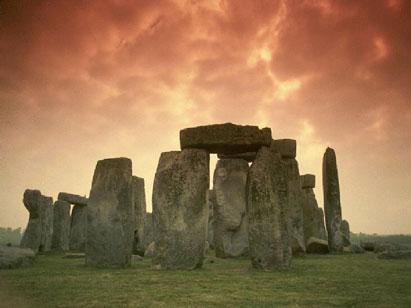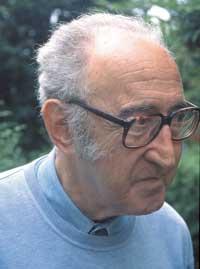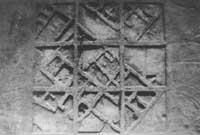Attention to the language of the old cathedral
2002/06/01 Galarraga Aiestaran, Ana - Elhuyar Zientzia Iturria: Elhuyar aldizkaria
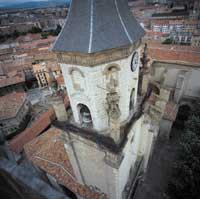
The Cathedral of Santa Maria, the most important historical building in Vitoria-Gasteiz, has been abandoned in recent years. For centuries it has been beautiful and elegant on the promontory vitoriano, but it has been dominated by the evil that was spreading in it. Finally, faced with the danger of falling, in 1993 they had to close. The cathedral thus lost its symbolic and functional value.
Although the closing decision was rigorous, there was no other solution. In addition, in part, it has been the announced closure. In fact, the cathedral explained from practically the beginning the symptoms of the disease. For example, the XVI. In the same century, in the books of the factory and the concierge, the concerns of balance appear. The efforts made since then to reinforce the structure have not yielded good results, on the contrary, in most cases they have been only wrong. Last essay XX. This is the 60s of the 20th century, but about three million euros today did not solve anything, 30 years later the disaster is evident.
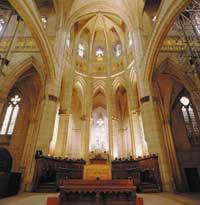
However, citizenship has not forgotten the ‘old cathedral’ and in 1996 a project of restoration of the building began. In the following two years, the team led by archaeologist Agustín Azkarate and architects Leandro Camara, Juan Ignacio Lasagabaster and Pablo Latorre developed the complete restoration plan of the cathedral. This Master Plan includes the diagnosis of the state of construction, the steps to follow in its recovery, the duration of the work and the budget. The work presented has aroused the interest and recognition of international experts.
In fact, the approach and methodology that appear in the master plan are completely new in a construction of this dimension. The authors of the plan were clear that the roots of the disease were truly deep and that the causes of some errors that were seen on the surface had to be searched underground. To completely cure the Cathedral, it was considered essential to treat the sick as a whole, body and soul. For this purpose they have adopted the path proposed by the archaeology of architecture.
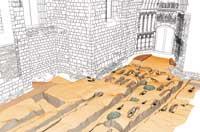
On the other hand, citizens have also positively valued the recovery project of the cathedral, which is expected to have a large influx of visitors throughout the work. In this way a certain confusion has been achieved between the population of Vitoria-Gasteiz. In short, the restoration will have a minimum duration of two legislatures, so the protection of the public is necessary to guarantee its execution. In this sense, the project of the Cathedral is also new, since the participation of society is minority.
Archaeology of Architecture
So far, most of the historical buildings have been restored from the classic point of view of architecture. That is, usually there is more importance to the style, and if the construction is classified within a certain style, it is not rare to pretend to adapt to the characteristics of this style. For example, if it is considered a Romanesque hermitage, when restoring it, the architect tries to ‘romanize’ the hermitage, and may put half-point arches where they were otherwise before.
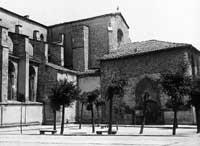
The cathedral of Vitoria is Gothic for most of the architects. But those responsible for the restoration plan look beyond the style. For example, it was already known that it had a plant that did not correspond to the high Gothic, which was older. It was suspected that this affected the posterior structure and that by continuing the works were correct.
This example illustrates the importance of publishing a story framed in the roots and walls of the cathedral. Not only to deepen the history of construction, but also to design a good restoration plan that allows to know the causes that have caused the diseases that have been described later. To carry out an exhaustive diagnosis and search for the cure, it is essential to know what was done in previous centuries.
This is claimed by the archaeology of architecture. From the years 70-80 of the last century, several Italian architects began to pay attention to the evolution of the constructions throughout the years. In addition to the aesthetic value of the construction, they took into account the society that raised and modelled it. According to these architects, through the changes experienced from the placement of the first stones, we could know aspects of the society that participated in the changes in each epoch, as the technological level or the methods of construction that used.
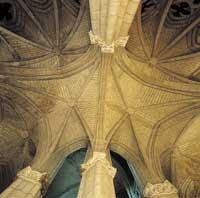
For the realization of these studies, the stratigraphic method used in archaeology was considered very useful. Normally archaeologists study the underground, but applying this method to the whole of the construction showed that the history of the building serves to bloom layer by layer. Thus was born the union between architecture and archaeology. Although the movement arose in Italy, the British methodological contribution must be taken into account.
This is the path chosen for the restoration of the cathedral of Vitoria. From this point of view, the cathedral has ceased to be a mere exponent of the Gothic to become a historical document, a deposit and a construction that must be analyzed stratigraphically.
As a historical document, the cathedral is the result of the addition and abstracted throughout time. Therefore, the Cathedral encompasses different constructive systems, representative of each time. All this provides information on the technical and economic capacity of the society of the time. In addition, the joint analysis of the built and underground structure and its integration into the same analysis system allows a much deeper knowledge. For this it is essential the collaboration between archaeologists and architects and, according to what proposes the archaeology of the architecture, has been based on the stratigraphic method.
In this sense, it is not surprising that the master plan is characterized by interdisciplinary collaboration. Among the twenty groups that have participated have participated architects, archaeologists, chemists, physicists, geologists, biologists, surveyors, mathematicians and engineers, among others.
To cure, first one must diagnose the disease
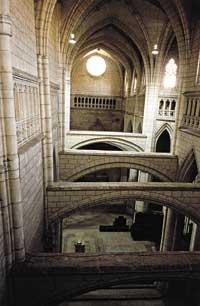
The first step to know the history of the Cathedral has been to empty the documents. Thousands of pages have been read, which has allowed to collect the transformations that have occurred in the last 500 years. The most interesting have been the factory books, where the costs of materials and labor used in the works carried out in the cathedral are collected. The bibliography and photographic archives about the city have also been useful, and some data that otherwise did not appear have been known thanks to memories of older people who have been closely linked to the cathedral.
The other source of information is the underground. Although several prestigious experts said that the Cathedral of Santa Maria did not keep anything prior to the Gothic, the working group had a special interest in outlining the roots of the cathedral. As previously mentioned, it was considered that the affections of the current cathedral had been rooted long ago and that for an effective restoration plan it was necessary to clarify this aspect, so excavations were made in the most significant places. Yes, they took into account that some places could not move because otherwise the stability of the building would be endangered.
Excavations have allowed to collect very important historical and structural data. For example, structures prior to the foundation of the city, remains of the Roman era, necropolis of the High Middle Ages, have come to light... But above all, an old architectural project has emerged that has conditioned the future of the cathedral. In passing, it has been shown that Vitoria-Gasteiz has been populated continuously since before what was thought.
On the other hand, it is worth mentioning the computerized three-dimensional photogrammetry and the use of geographical information systems (GIS) for the cathedral registration. Although photogrammetry is usually used to make surface maps, it has been observed that it is a very useful tool in archaeological excavations. With this system, the layers that disappear in excavation are stored in three-dimensional images. In this way, anyone who wants to reanalyze it can access all the details.
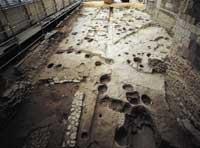
In the case of the Cathedral, photogrammetry has been applied to the whole elevation and these three-dimensional figures retain a record of real geometry and time. Likewise, they have been taken as a base for the elaboration of an impressive database. For the preparation of the Master Plan different studies have been carried out: what materials have been used, see their origin, determine their composition, determine the tool used to carve the stone, etc. In addition to the technical aspect, the aspects of style or appearance have been analysed. All of these data have been included in three-dimensional images that have led to an impressive database.
Undoubtedly, it has been a hard work. But the counterpart is no less: thanks to it you can read the history that hides in the roots and walls of the cathedral, through layers. Known the antecedents, the restoration project of the cathedral has on this occasion solid bases.
What was said by the stones After exploring the roots and stones of the cathedral, a series of essential data have been collected for an adequate restoration plan. Perhaps the most important and decisive thing has been to know what was built. In fact, the Gothic cathedral began to be built under the orders of King Alfonso X (1251-1284). But to this end, the project started by Alfonso VIII, which dominated the city in 1200. This explains that the cathedral considered Gothic has such an archaic plant. This primitive building intended to fulfill its defensive function and the raised walls reach 20 m of height in some points of the current cathedral. Another example of how specific interventions affect, instead of in the subsoil, has been found in the upper part: XIV. In the eighteenth century, the current cathedral was a parish church with wooden vaults in regard to the architecture and resources of the time. At the end of the following century it was declared a Collegial Church and works of honour, beautification and extension of the name were carried out. Among many other changes, stone vaults were built instead of wooden vaults. However, the pillars and walls were not able to withstand this weight, which has caused many of the problems of instability that the cathedral has suffered since. As if it were not enough, the repairs have been done on several occasions, but when it comes to partial remedies, they have almost always been worse, since the repair in one part has damaged the other. |
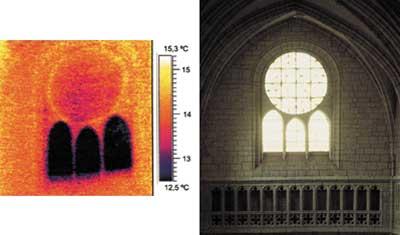
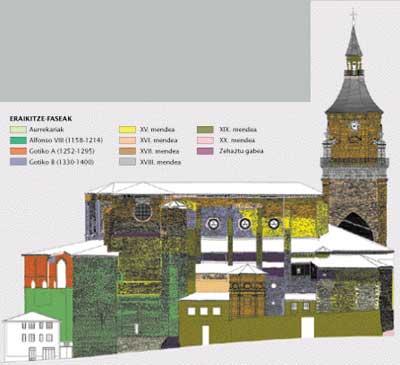

Gai honi buruzko eduki gehiago
Elhuyarrek garatutako teknologia



